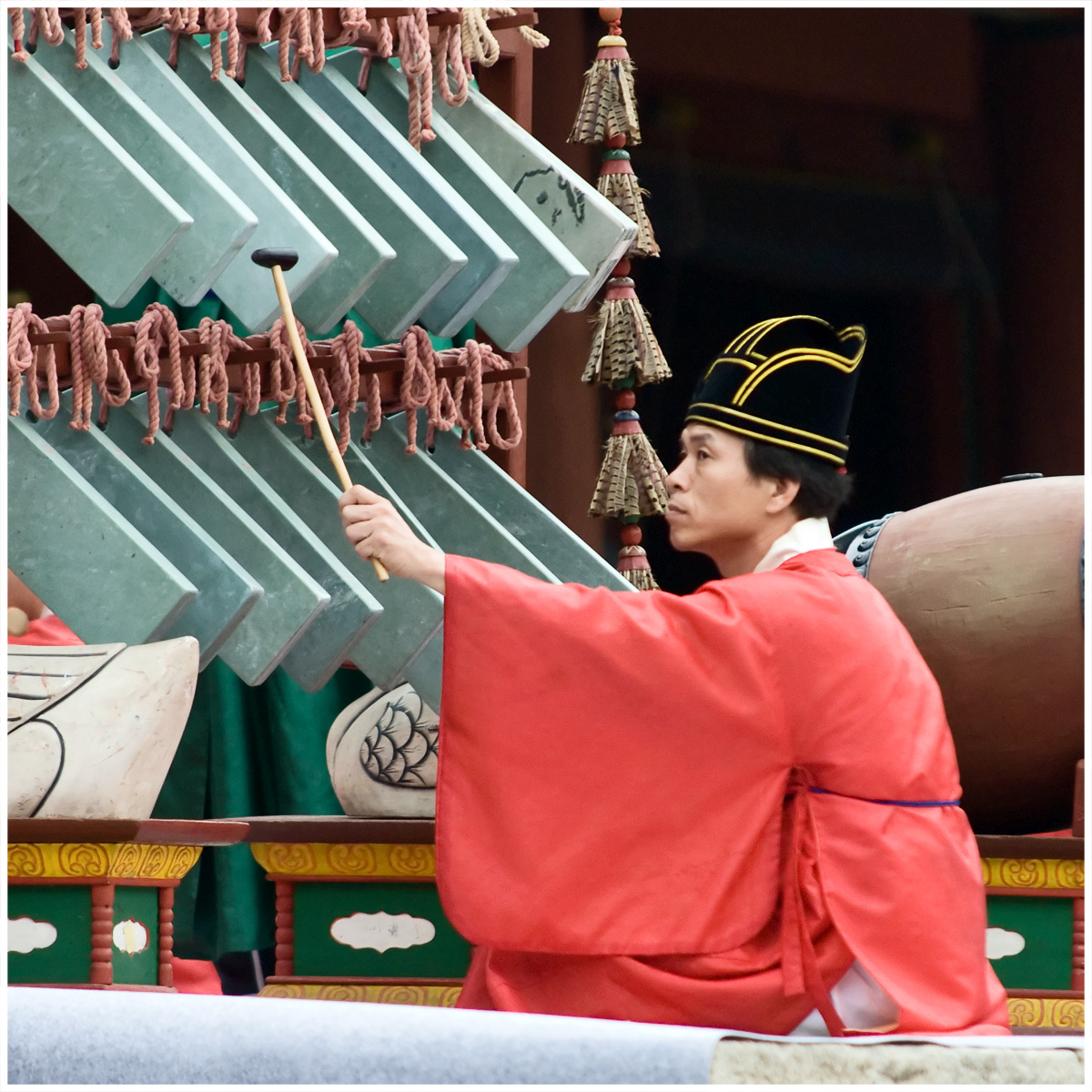Bianqing — The bianqing (zh stp|s=|t=|p=biān qìng) is an ancient Chinese musical instrument consisting of a set of L shaped flat stone chimes, played melodically. The chimes were hung in a wooden frame and struck with a mallet. Along with the bronze bells… … Wikipedia
Pyeonjong — Infobox Korean name hangul=편종 hanja= rr=pyeonjong mr=p yŏnjong The pyeonjong is an ancient Korean musical instrument consisting of a set of 16 bronze bells, played melodically. The bells are hung in a wooden frame and struck with a mallet. Along… … Wikipedia
Klangsteinspiel — Das chinesische Klangsteinspiel namens bianqing (chinesisch 編磬 / 编磬 biānqìng, engl. Chinese stone chimes), das auch als shibianqing (石编磬 shíbiānqìng) bezeichnet wird) ist ein altes chinesisches Musikinstrument, das aus… … Deutsch Wikipedia
Bianqing — Saltar a navegación, búsqueda Se ve el bianqing arriba a la derecha El bianqing (chino tradicional: 編磬, chino simplificado … Wikipedia Español
Music of Korea — Traditional Korean music includes both the folk, vocal, religious and ritual music styles of the Korean people. Korean music, along with arts, painting, and sculpture has been practiced since prehistoric times.[1] Two distinct musical cultures… … Wikipedia
Lithophone — A lithophone is a musical instrument consisting of a plurality of rocks or pieces of rock, in which musical notes are sounded by striking one or more of the rocks in combination (harmony) or succession (melody).Notable examples*A rudimentary form … Wikipedia
Traditional Korean musical instruments — comprise a wide range of string, wind, and percussion instruments.tringKorean string instruments include those that are plucked, bowed, and struck. Most Korean string instruments use silk strings, except as noted.Plucked*Gayageum (hangul: ; hanja … Wikipedia
Munmyo — Infobox Korean name hangul=문묘 hanja= rr=Munmyo mr=Munmyo Munmyo (also called Seonggyungwan Munmyo) is Korea s primary Confucian shrine. It is located in central Seoul, South Korea, at 53 Myeongnyun dong 3(sam) ga, Jongno gu, on the campus of… … Wikipedia
Robert Garfias — (born 1932) is a key figure in ethnomusicology and musicology. He is a professor of Anthropology [cite web | url = http://www.faculty.uci.edu/scripts/UCIFacultyProfiles/DetailDept.CFM?ID=2524 | title = UCI Faculty Profiles: Robert Garfias | date … Wikipedia
Bianqing — Das chinesische Klangsteinspiel namens bianqing (chin. 編磬 / 编磬, biānqìng, engl. Chinese stone chimes), das auch als shibianqing (石编磬, shíbiānqìng) bezeichnet wird) ist ein altes chinesisches Musikinstrument, das aus einem Satz von meist L… … Deutsch Wikipedia

